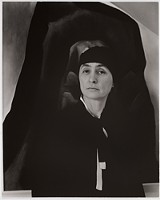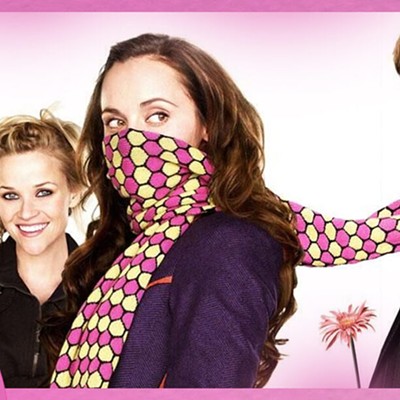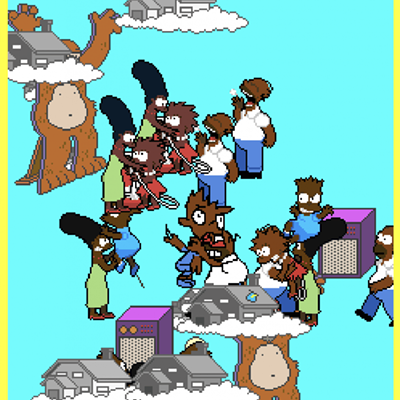"Georgia O'Keeffe: Color and Conservation"
The new MAG show shows off the woman as artists, and the art as industry
By Alex Miokovic and Heidi Nickisher[
{
"name": "500x250 Ad",
"insertPoint": "5",
"component": "15667920",
"parentWrapperClass": "",
"requiredCountToDisplay": "1"
}
]
Art
The art --- and industry --- of Georgia O'Keeffe
Last weekend the MemorialArtGallery opened the touring exhibit Georgia O'Keeffe: Color and Conservation.Just a year and a half ago the Albright-Knox in Buffalo hosted an O'Keeffe exhibit. Of course, O'Keeffe's career was a long one. She was a prominent figure for seven decades and produced a body of work consisting of more than 1,000 paintings. And although it has been said that her work verges on the abstract, it is actually representational. For example, "Apple Family - 2" (1920) is a tiny but pristine still-life of eight little apples, all closely grouped together. Scrupulously painted on a very tightly woven linen canvas, the apples have a dimensionality that almost makes you want to reach out and touch one. Indeed, her subject matter of landscapes, cityscapes, and flowers and foliage was easily digested by the art market during her lifetime, and even more so in the present.
Today, O'Keeffe's work represents a status quo --- something anybody can enjoy --- and a safe one at that. This safety has inadvertently also opened the door to criticism and a little artist-bashing as well. On the one hand, it is easy for her work to be considered a sell-out because (almost) everybody likes it and therefore flocks to see it and "ooh and aah" over it. On the other hand, in her own time, she was an independent artist who didn't follow any specific trends in the art market, but rather her own interests and passions. Then again, she may have also had the luxury of not worrying about trends and the art market since photographer and New York gallery owner Alfred Stieglitz began to promote her work as early as 1918. This support lasted until his death in 1946.
Regarding the current O'Keeffe exhibition at the MemorialArtGallery, as with any exhibition that highlights a popular figure, there has to be a particular focus that makes it different from all the others. The exhibition at the Albright-Knox focused on the "reality" of her sight in relation to her work, comparing photographs of the actual subject of her paintings (rolling hills, adobe houses) to the paintings themselves, in a "look, she paints what she sees" kind of statement.
At the Memorial, however, in a show that was organized by the Mississippi Museum of Art, the focus is on the importance of the materials of painting and what the exhibition organizers refer to as the "almost unknown correspondence between...O'Keeffe and her longtime conservator, Caroline Keck," with whom O'Keeffe began working closely in the mid-1940s. And it is a fascinating and revealing correspondence --- perhaps all the more so as we not only become aware of O'Keeffe's awareness of materials in general but also her awareness of how time and the environment likewise take their toll on one's work.
Consider, for example, the use of pastels. Although O'Keeffe worked with pastels throughout her career, they are relatively rare in her overall work. In "Abstraction, Seaweed and Water - Maine" (1920), the intensity of opaque "pastel" colors is striking as is the control of the medium. The image itself is somewhat reminiscent of a biomorphic Morris Louis.
What also particularly distinguishes this exhibition is the collaboration with the George Eastman House. Along with a series of explanatory text panels, we are led into the exhibition with the aid of several black and white photographs of O'Keeffe as captured by Alfred Stieglitz. O'Keeffe was a favorite subject for Stieglitz, who was not only her promoter but also her partner. These photographs, coupled with a number of portraits of O'Keeffe by Todd Weber, are an important part of this exhibition. Interestingly, Weber's photographs may be the more engaging of the two photographers' works in that they present O'Keeffe the woman, the artist, the cook in the kitchen, as subject rather than an eroticized art objet.
As always, the Memorial's exhibition design crew has done an excellent job at incorporating a kind of seamlessness in moving the viewer from textual introduction, to Stieglitz photographs, to the work itself, and ultimately, to the O'Keeffe-specific museum shop. Yes, a shop is incorporated right into the exhibition space! It's not uncommon practice these days to incorporate a shopping experience with an exhibition, so it's not really as jarring as one might think. But what is interesting is how art and, for that matter, culture become something that Theodore Adorno warned us about --- another industry.
Georgia O'Keeffe: Color and Conservation, through December 31 | MemorialArtGallery. 500 University Avenue | Hours: Tuesday-Friday, noon-5 p.m. (Thursday until 9 p.m.); Saturday-Sunday noon-5 p.m. | Admission to the exhibit is $5-$15, with reduced prices Thursday 5-9 p.m. | For information call 473-7720 or visit www.mag.rochester.edu; to buy tickets to the exhibit call Ticketmaster at 232-1900, visit www.ticketmaster.com, or visit the museum during business hours.
Latest in Art
More by Alex Miokovic
-
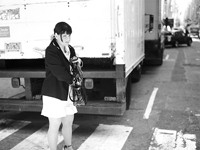
Larry Merrill at M. Early Gallery
Dec 6, 2006 -
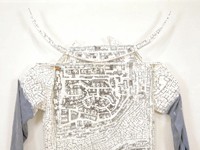
"Kim Jones: A Retrospective"
Nov 29, 2006 -
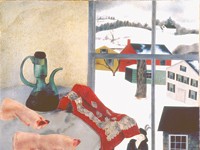
"My America" at the MAG
Nov 8, 2006 - More »
More by Heidi Nickisher
-

Larry Merrill at M. Early Gallery
Dec 6, 2006 -

"Kim Jones: A Retrospective"
Nov 29, 2006 -

"My America" at the MAG
Nov 8, 2006 - More »
